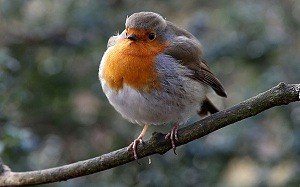This image shows the total solar eclipse on July 11, 2010. The view was captured by Imelda Joson and Edwin Aguirre from the Tatakoto Atoll in French Polynesia’s Tuamotu Archipelago. There will be another total solar eclipse on March 20, 2015. IMELDA JOSON AND EDWIN AGUIRRE?
This week, the moon will completely cover the disk of the sun, creating a solar eclipse that only a small part of the world can see.
The March 20 total solar eclipse event will be the  first since Nov. 3, 2013. The dark umbral shadow cone of the moon will trace a curved path primarily over the North Atlantic and Arctic Oceans, beginning off the southern tip of Greenland and then winding its way counterclockwise to the northeast, passing between Iceland and the United Kingdom.
first since Nov. 3, 2013. The dark umbral shadow cone of the moon will trace a curved path primarily over the North Atlantic and Arctic Oceans, beginning off the southern tip of Greenland and then winding its way counterclockwise to the northeast, passing between Iceland and the United Kingdom.
The shadow will then pass over the Danish-owned Faroe Islands, the sparsely inhabited Norwegian island group of Svalbard and then it will hook counterclockwise toward the northwest, where it leaves the Earth’s surface just short of the North Pole. [Solar Eclipses: An Observer’s Guide (Infographic)]
If you don’t have the chance to see the solar eclipse in person, you can catch it live online as well. The online Slooh Community Observatory will broadcast live views of the solar eclipse through its website Slooh.com, beginning at 4:30 a.m. EDT (0830 GMT).
You can also watch the total solar eclipse webcast on Space.com on March 20, courtesy of Slooh.The Virtual Telescope Project will also air live views of the eclipse through the project’s website beginning at 4 a.m. EDT (0800 GMT), and it will also be carried on Space.com if possible.
The Faroes are an island group consisting of 18 major islands with a total area of approximately 540 square miles (1,400 square kilometers) and a population of almost 50,000 people. The islands are rugged and rocky with some low peaks; the coasts are mostly cliffs.
The point of greatest eclipse occurs about 162 miles (260 km) north of the Faroes, in the Norwegian Sea. By the standards of most eclipses, the moon’s shadow projected onto the Earth’s surface for this event will resemble a huge ellipse of darkness measuring about 288 miles (463 km) wide by 93 miles (150 km) long.
These unusual dimensions can be attributed in part to the fact that about 13.5 hours earlier, the moon will arrive at that point in its orbit closest to Earth (perigee), 222,192 miles (357,584 km) away. And because the shadow is passing over the Arctic, it will strike the Earth at a very oblique angle, resulting in its distinct elliptical shape. (Solar eclipse enthusiast Michael Zeller created an interesting animation showing the eclipse’s path.)
About a half hour after leaving the Faroes, the shadow makes its next — and final — landfall at Svalbard, a Norwegian archipelago in the Arctic Ocean. Situated north of mainland Europe, it is about midway between continental Norway and the North Pole. The largest island is Spitsbergen, followed by Nordaustlandet and Edgeøya. Other than the research stations located at Alert, Nunavut and Nord, Greenland, Svalbard is the northernmost place in the world with a permanent population. Based on the most recent census, only 2,642 people live there.
Birds to stop singing as moon passes the sun
Songbirds are expected to fall silent as the Moon passes in front of the Sun and the darkening sky triggers night-time behaviour
The solar eclipse will be undoubtedly a stunning visual spectacle, plunging Britain into a morning twilight.
But listen carefully, because the phenomenon will also subtly alter the sound of the UK.
Songbirds are expected to fall silent as the Moon passes in front of the Sun and the darkening sky triggers night-time behaviour. Nocturnal animals like owls and bats could become more alert while farm animals and pets may look for a place to sleep.
During previous eclipses dragonflies were spotted hiding under leaves, ants returned to their nests and grasshoppers stopped making their characteristic clicking sound.
Chris Hickman of the Woodland Trust said: “The main thing seems to be it goes quiet.
“As you might expect the birds are temporarily confused into thinking it’s night time. It was quite noticeable (at the last eclipse) in 1999.”
Animal experts warned that nervous animals could be upset by the phenomena and owners were advised to keep them indoors.
Donald Broom, Emeritus Professor of Animal Welfare at the University of Cambridge, said: “They’ll notice it will get dark. Although night happens every day, you don’t have a substantial change in light intensity in the morning, so it’s a bit disturbing for them.”
“Animals out in the fields might stop grazing and move to a more sheltered place as they do at night.”
The RSPCA said it had had a number of calls from worried pet owners.
“It is possible some animals may find their routine disrupted and become confused or anxious,” said an RSPCA spokesman.
“While we believe there is nothing to worry about, it is important that owners are aware of the signs of anxiety in their animals just in case.”
Insects like moths and butterflies are particularly affected by the changing light. Zookeepers at London Zoo are taking steps to ensure they are not disturbed
“A solar eclipse, especially a full eclipse, could affect the flight of nocturnal moths and diurnal butterflies – who use the light for navigation,” said Dave Clarke Head of Invertebrates.
“Here at ZSL London Zoo’s Butterfly Paradise we’ll amend the lighting slightly to counter this during the partial solar eclipse on the 20 March.”
Cocks may also start to crow, thinking it is daybreak again, while frogs may start croaking loudly, according to experts who had studied animal behaviour in previous eclipses.
And the end of the eclipse could be greeted with a cacophony of animal sounds as previous studies have shown that the re-emergency of the Sun can trigger a false dawn chorus.
Paul Murdin, visiting professor of Astronomy at Liverpool John Moores University, studied animal reactions to the Zimbabwean total eclipse of 2001.
He found that hippos became nervous and there was a ‘crescendo of loud dawn chorus-like calls’ from turtle doves, after they had fallen silent though the event.
The rare astronomical alignment will see the Moon will pass directly between the Sun and the Earth, blocking out most of the light from around 8.40am.
Eclipses happen rarely because of the uneven orbits of the Moon and the Earth. The exact alignment needed for a partial and total eclipse is known as the Syzygy Effect and can only happen when the Moon is at its closest point to the Earth.
The place in Britain that will see the best eclipse is the west coast of the Isle of Lewis, close to Aird Uig. There 98 per cent of the sun will be obscured at mid-eclipse at around 9.36am
Viewers on Skye and Orkney could see around 97 per cent of the Sun covered. But anyone wishing to see a total solar eclipse will have to visit the Faroes or Northern Scandinavia, where the Sun will be totally covered for around two minutes.
In London the maximum eclipse, when the Moon is nearest the middle of the sun, will be at 9.31am. and the Moon will have passed in front of the Sun by 10.41am.
However the eclipse could be obscured by a combination of low cloud and air pollution crossing the Channel from France.
But some experts predicted that the eerie fog could make the eclipse more ‘atmospheric.’
Dr Chris North, Research Associate at the School of Physics and Astronomy at Cardiff University said: “With smog I’d have thought the darkening would be visible, and the disk of the Sun should still be seen, unless it’s really thick, or has thick cloud above it, . It could be quite atmospheric.”
The next total eclipse anywhere near the UK will be in 2081 in central Europe, and finally in Britain in 2090. A partial eclipse will occur in Britain in 2026.
Discovery/ Telegraph














